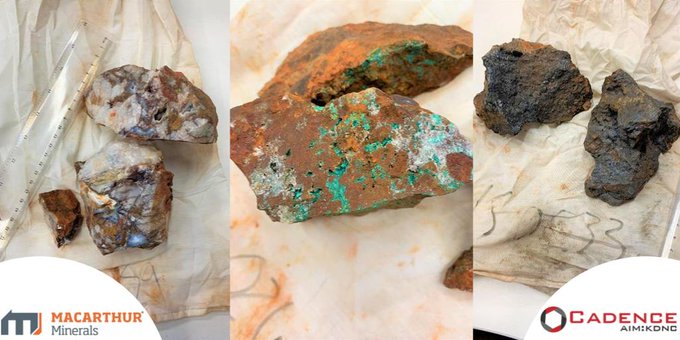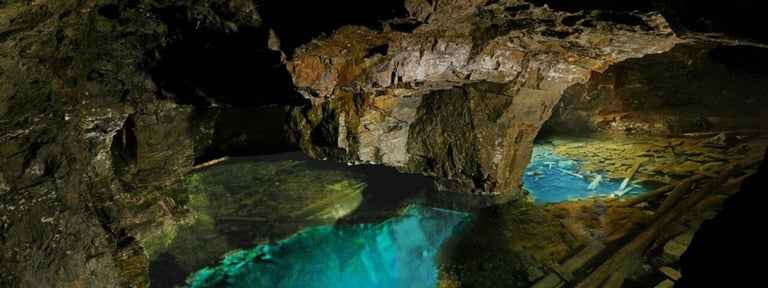Cadence Minerals plc (LON:KDNC; OTC: KDNCY) has announced that DEV Mineração S/A has completed a new Mineral Resource Estimate in compliance with the Australian Code for Reporting of Exploration Results, Mineral Resources and Ore Reserves (“JORC Code, 2012”) for the Amapá Iron Ore Project Brazil.
Highlights:
● Substantial increase in total Measured, Indicated and Inferred Mineral Resources, to 276.24 Million Tonnes (“Mt”) grading 38.33% Fe
● New Measured Resource of 55.33 Mt grading 39.26% Fe
● Measured and Indicated Resource increase to 229.48 Mt at 38.76% Fe, from 176.7 Mt at 39.75% Fe[1] , reported within an optimised pit shell and using a cut-off grade of 25% Fe.
● Inferred Mineral Resource increased to 46.76 Mt at 36.20% Fe, from 8.7Mt at 36.9% Fe, reported within an optimised pit shell and using a cut-off grade of 25% Fe.
Cadence Minerals CEO Kiran Morzaria commented:
“The main aim of our new mineral resource statement was to provide a sound basis for pre-feasibility studies. In particular, to convert a significant portion of the indicated mineral resource into the measured category. The results reported today have achieved this goal and more.
The results clearly indicate the robustness and consistency of the Amapá resource.
As we move closer to the next stage of development, this higher degree of certainty in our mineral resource estimate provides more funding options for the Project. The new measured resource and the overall increase in the mineral resource provides a sound basis for an initial 15-year mine life, with the potential to expand this further by upgrading the 46.76 Mt of inferred resources.”
Assumptions and Method of MRE
Prominas Mining Ltd (“Prominas”) was commissioned by DEV Mineração S/A (“DEV”) to complete a JORC Code (2012) compliant MRE on the 100% owned mineral assets of DEV comprising the Amapá Iron Ore Deposit (“Amapá” or the “Project”) located in Amapá State, Brazil. DEV holds the mining rights to the Project, and Cadence, via a joint venture company, owns 27% of DEV. The classification of Mineral Resources was considered appropriate on the basis of geological confidence, drill spacing, sample interval, QAQC and estimation performance.
Before this MRE, the most recent MRE on the Amapá Project was completed in 2020 by Cadence (“2020 MRE”). The 2020 MRE was estimated following the Canadian Institute of Mining, Metallurgy and Petroleum (CIM) “Estimation of Mineral Resources and Mineral Reserves Best Practice Guidelines” (CIM, 2019). The 2020 MRE was limited to the Friable Hematite, Friable Itabirite and Friable Altered Itabirite material types. While the current MRE included these material types plus Colluvium and Canga material within the resource statement. This inclusion of Colluvium and Canga into the MRE was deemed appropriate as it was used as ore in historic production. The inclusion of Colluvium and Canga in the MRE represents the majority of the increase in the current MRE.
The geologic units that underlie the region consist of Archean basement rocks, TTG terrains (Guianense Complex, Tumucumaque Complex and Água Fria Metatonalite), discordantly overlaid by Paleoproterozoic greenstone belts (Vila Nova Group), in turn, overlain by Cenozoic lateritic deposits and Quaternary alluvial materials. In the Amapá System area, the iron ore (oxide and silicate facies itabirites), calc-silicate and carbonatic rocks occur in two regions. The first is a synform (locally named APW/APS) above the unit of metabasic rocks (mainly amphibolites) and quartz mica schist biotite and muscovite-bearing schist, where the mine is located. The second is Dragão, a mineralised body located 3.5km to NE with orientation NW/SE, assumed as a potential resource and not included in this mineral resources estimate.
Mineralisation extends approximately 6.5km in strike length, 1.5km in width, and exists in some areas to more than 100m in depth. Geological processes have weathered this proto-resource, the hard itabirite (ITC), actually considered waste, transforming part of the volume into mineral resources, the soft itabirite (ITB).
A 3D geological model was built by an implicit modelling method based on interpreted geological domains using the drillhole database and study of the old sections provided by DEV, then used to flag the sample data for statistical analysis and to limit the resource estimation. For this study, statistical and geostatistical analysis was carried out on drilling data composited to 4 m downhole for APW/APS only. This included variography to model spatial continuity relationships in the geological domains.
Geostatistical analysis and interpolation were undertaken using MinePlan© proprietary software. The Ordinary Kriging interpolation method was used for the estimation of Fe, Al2O3, SiO2, P, and Mn, using variogram parameters defined from the geostatistical analysis for the APW/APS domains.
Wet Bulk density values for the Amapá deposit were assigned based on data provided by DEV. The density values were assigned to 15 lithologies based on almost 678 density samples for friable and compact material collected from 2006 to 2012.
Mineral Resource Statement
The MRE has been reported at a cut-off grade of 25% Fe constrained by a resource open pit and the topography dated April 2014, in line with the Reasonable Prospects For Eventual Economic Extraction (RPEEE) principle. The MRE has been estimated, considering a product revenue of US$ 120/t. The geotechnical parameters, metallurgical recovery and updated mining costs were all provided by DEV.
Table 1: Gross and attributable Mineral Resources for the Amapá Iron Ore Project at a Cut-Off Grade reported within an optimised pit and above a cut-off grade of 25% Fe
| Classification | Material | Tonnage (Mt) | Attributable | Fe | SiO2 (%) | Al2O3 (%) | P | Mn (%) |
| Tonnage | (%) | (%) | ||||||
| (Mt) | ||||||||
| Measured | Friable Altered Itabirite | 33.31 | 8.99 | 38.47 | 30.42 | 7.22 | 0.17 | 1.19 |
| Friable Itabirite | 14.65 | 3.96 | 39.55 | 36.5 | 2.81 | 0.086 | 0.88 | |
| Friable Haematite | 0.69 | 0.19 | 62.63 | 4.32 | 2.2 | 0.226 | 0.38 | |
| Colluvium | 5.84 | 1.58 | 38.8 | 21.66 | 11.89 | 0.177 | 0.7 | |
| Canga | 0.84 | 0.23 | 50.03 | 5.68 | 10.6 | 0.971 | 0.18 | |
| Sub-total | 55.33 | 14.94 | 39.26 | 30.4 | 6.54 | 0.161 | 1.03 | |
| Indicated | Friable Altered Itabirite | 66.43 | 17.94 | 37.41 | 32.11 | 6.73 | 0.173 | 1.29 |
| Friable Itabirite | 37.14 | 10.03 | 39.73 | 35.73 | 2.91 | 0.103 | 0.92 | |
| Friable Haematite | 1.5 | 0.41 | 57.53 | 12.85 | 2.18 | 0.113 | 0.43 | |
| Colluvium | 64.22 | 17.34 | 37.98 | 23.11 | 11.86 | 0.14 | 0.58 | |
| Canga | 4.86 | 1.31 | 48.81 | 8.98 | 10.08 | 0.579 | 0.21 | |
| Sub-total | 174.15 | 47.02 | 38.6 | 28.75 | 7.86 | 0.156 | 0.91 | |
| Mea. + Ind. | Friable Altered Itabirite | 99.74 | 26.93 | 37.76 | 31.55 | 6.89 | 0.172 | 1.26 |
| Friable Itabirite | 51.79 | 13.98 | 39.68 | 35.95 | 2.88 | 0.098 | 0.91 | |
| Friable Haematite | 2.19 | 0.59 | 59.14 | 10.16 | 2.19 | 0.149 | 0.41 | |
| Colluvium | 70.06 | 18.92 | 38.05 | 22.99 | 11.86 | 0.143 | 0.59 | |
| Canga | 5.7 | 1.54 | 48.99 | 8.49 | 10.16 | 0.637 | 0.21 | |
| Sub-total | 229.48 | 61.96 | 38.76 | 29.15 | 7.54 | 0.157 | 0.94 | |
| Inferred | Friable Altered Itabirite | 11.27 | 3.04 | 37.01 | 31.98 | 6.4 | 0.19 | 1.67 |
| Friable Itabirite | 3.09 | 0.83 | 38.6 | 35.35 | 3.28 | 0.144 | 1.41 | |
| Friable Haematite | 0.53 | 0.14 | 50.06 | 21.36 | 2.88 | 0.094 | 0.85 | |
| Colluvium | 30.21 | 8.16 | 34.8 | 26.2 | 12.92 | 0.107 | 0.53 | |
| Canga | 1.66 | 0.45 | 47.19 | 11.6 | 9.98 | 0.381 | 0.27 | |
| Sub-total | 46.76 | 12.63 | 36.2 | 27.62 | 10.49 | 0.139 | 0.86 | |
| TOTAL | 276.24 | 74.58 | 38.33 | 28.89 | 8.04 | 0.154 | 0.93 |
Notes:
(1) The Mineral Resource is considered to have reasonable prospects for eventual economic extraction based on an optimised pit shell
(2) Cut-off grade of 25% Fe applied
(3) Tonnages are reported as wet tonnes
(4) Mineral Resources are not reserves until they have demonstrated economic viability based on a Feasibility Study or Pre-Feasibility Study
(5) The Mineral Resource Estimate has an effective date of 31 August 2022
(6) Mineral Resources have been classified in accordance with the Australian Code for Reporting of Exploration Results. Mineral Resources and Ore Reserves (JORC Code 2012)
(7) The attributable tonnes represent the part of the Mineral Resource that will be attributable to Cadence Minerals’ 27% interest in the Project
(8) The operator is DEV
Prominas notes that the Mineral Resource has a reasonable prospect for eventual economic extraction but is not currently considered Ore Reserves. Ore Reserves are estimates of the tonnage and grade or quality of material contained in a Mineral Resource that can be economically mined and processed. To be considered an Ore Reserve, modifying factors must be applied to the MRE as part of the preparation of a Pre-Feasibility or Feasibility Study. The estimated amount of saleable material contained in the final product must demonstrate a positive net present value using an appropriate discount rate and must demonstrate that eventual extraction could be reasonably justified.
Prominas are not aware of any factors (environmental, permitting, legal, title, taxation, socio-economic, marketing, political, or other relevant factors) that have materially affected the Mineral Resource Estimate. The data used for the MRE update were drill hole databases with proper validations, topographic surveys and the previous Mineral Resource models provided by DEV with the work undertaken by Prominas, which included several site visits during 2021.








































